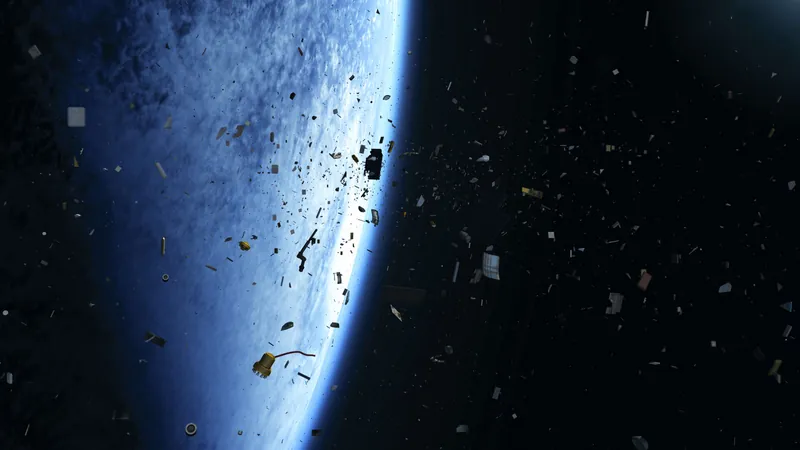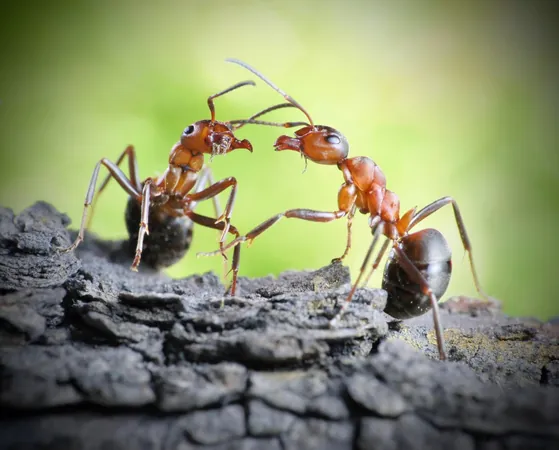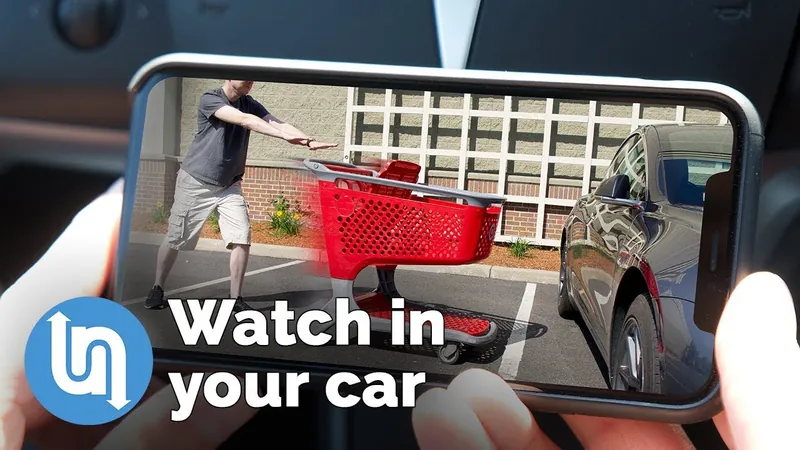
Is It Time to Put Space on the Global Agenda? The Case for a Sustainable Development Goal 18
2025-01-11
Author: Wei
The year 2015 marked a significant milestone when the United Nations rolled out the ambitious 2030 Agenda for Sustainable Development, setting forth 17 Sustainable Development Goals (SDGs) designed to foster a better future for all. These goals tackle pressing issues such as poverty eradication, hunger alleviation, quality education, and equality worldwide. But as our gaze shifts toward the cosmos, there is compelling support for adopting an 18th SDG focused solely on the sustainable usage of space.
This proposed SDG18 would advocate for the responsible use of Earth's orbit, particularly as governments and private enterprises flood Low Earth Orbit (LEO) with increasing numbers of satellites and space missions. With the advent of satellite mega-constellations, there’s an urgent need to address the burgeoning problem of space debris—essentially junk accumulating in orbit that poses risks to current and future endeavors in space exploration.
Researchers from prestigious institutions including the University of Plymouth, the Auckland Space Institute, and NASA’s Jet Propulsion Laboratory have recently underscored how strategies employed to combat marine debris could be adapted to tackle space litter. Moriba Jah, a co-author and aerospace engineering professor, aptly highlighted that “space is a finite resource in dire need of environmental protection.” As our reliance on space grows, neglecting the environmental implications of orbital debris could lead us to what experts call the “tragedy of the commons.”
Since the inception of the Space Age in 1957, approximately 6,740 rockets have launched, deploying nearly 20,000 satellites into orbit. Currently, around 13,230 of these satellites remain in space, with about 10,200 still operational, providing invaluable services like global communications, emergency response, and environmental monitoring. However, the fallout has been alarming: over 40,500 pieces of debris larger than 10 cm and an estimated 100 million smaller fragments now clutter LEO, prompting fears of a catastrophic phenomenon known as Kessler Syndrome, where collisions create an exponential increase in space debris.
Dr. Imogen Ellen Napper, who helmed the recent pivotal study, remarked, “The need to protect and connect our natural environments, from Earth's oceans to space, has never been more urgent.” The parallels drawn between oceanic and space pollution emphasize that the solutions to these challenges must be globally coordinated—a UN-backed agreement might be our best chance at protecting Earth's orbit for future generations.
Experts suggest that SDG18 could mirror SDG14, which aims to conserve and ensure sustainable use of the oceans, thus highlighting the interconnected nature of these two issues while providing a framework for the governance of space resource utilization. Additionally, space technologies have been acknowledged for their role in tracking climate change, enhancing disaster response capabilities, and fostering economic development.
As we continue to push the boundaries of human presence beyond Earth, safeguarding the orbital environment will be critical. The lessons learned from the ocean’s degradation should guide our actions in space; otherwise, we risk repeating the same mistakes of exploitation that have led to dire consequences for our planet's oceans.
The gravity of this situation cannot be overstated; as we collectively step into the future, joining industries and countries must prioritize responsible stewardship of our orbital pathways. Otherwise, we may find ourselves facing insurmountable challenges in our quest to become an interplanetary species.
Could adopting a Sustainable Development Goal for space be the next big leap toward securing a healthier world for both us and our extraterrestrial endeavors? The time to act is now—before it's too late.





 Brasil (PT)
Brasil (PT)
 Canada (EN)
Canada (EN)
 Chile (ES)
Chile (ES)
 Česko (CS)
Česko (CS)
 대한민국 (KO)
대한민국 (KO)
 España (ES)
España (ES)
 France (FR)
France (FR)
 Hong Kong (EN)
Hong Kong (EN)
 Italia (IT)
Italia (IT)
 日本 (JA)
日本 (JA)
 Magyarország (HU)
Magyarország (HU)
 Norge (NO)
Norge (NO)
 Polska (PL)
Polska (PL)
 Schweiz (DE)
Schweiz (DE)
 Singapore (EN)
Singapore (EN)
 Sverige (SV)
Sverige (SV)
 Suomi (FI)
Suomi (FI)
 Türkiye (TR)
Türkiye (TR)
 الإمارات العربية المتحدة (AR)
الإمارات العربية المتحدة (AR)